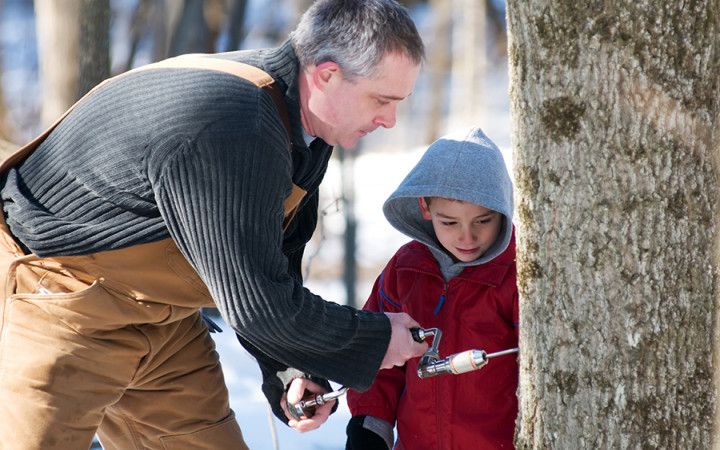Today’s Wonder of the Day was inspired by Ms. Rye's 5th Grade class from Sioux Falls. Ms. Rye's 5th Grade class Wonders, “How do trees create sap?” Thanks for WONDERing with us, Ms. Rye's 5th Grade class!
You're sleeping peacefully when suddenly the sound of pots and pans gets you stirring. You're able to drift back to sleep for a few minutes, but it's not long before you're pulled into full consciousness by your nose.
As you sit up in bed, you sniff the air and recognize the unmistakable smell of pancakes! Your mouth begins to water as you jump out of bed and head to the kitchen.
It won't be long until you're seated at the table before a stack of flapjacks, ready to soak them in that sweet and sticky substance that turns ordinary pancakes into a breakfast treat: syrup!
As you wait for your pancakes to be served, you take some time to WONDER about where that syrup comes from. Like the paper you write on at school, syrup comes from those tall, woody perennials you often take for granted. What are we talking about? Trees, of course!
You can't drill a hole in just any old tree and have syrup pour out. You can, however, tap certain kinds of trees, such as sugar maple trees, and collect gallons of sap at the right time of year.
Syrup makers use tree sap to make syrup. On average, it takes about 40 gallons of sap to make just one gallon of delicious syrup.
Sap inside a tree is a bit like blood inside the human body. Sap flows through a part of the outer tree trunk known as sapwood, delivering water, sugars, and nutrients throughout the tree.
Sap production begins in warm summer months when the process of photosynthesis creates carbohydrates that get stored in the tree as starch. The starch then gets converted to sugar in the form of sucrose that dissolves into the sap, which is stored for the winter.
When spring begins to arrive (often around the month of March), the weather provides just the right conditions to produce sap that can be collected to make syrup. Those special conditions consist of alternating freeze/thaw cycles in which temperatures drop below freezing at night and rise above freezing during the day.
The rising temperatures during the day create positive pressure within the tree that will force sap out of any holes in the tree. In addition to taps purposefully placed in the tree to collect sap, sap will flow out of broken branches or any other cracks or holes in the tree.
At night when temperatures fall back below freezing, negative pressure develops inside the tree. This creates a suction that stops the sap from flowing out of the tree. This suction force also pulls water through the tree's roots to replenish the sap. Experts believe these differences in pressure as a result of temperature fluctuations occur because of the expansion and contraction of carbon dioxide gas within the sapwood.
This cycle continues until temperatures stay above freezing, at which point sap will stop flowing and begin the sap production cycle anew. Scientists believe that the sap's main purpose is to provide nutrients to new leaves as they grow. In turn, those leaves will fuel the process of photosynthesis that starts the sap production process.
You may be WONDERing if drilling holes into trees is damaging. Using proper tapping procedures, trees sustain only minor wounds that are not damaging. Trees repair drill holes and heal in a matter of time.





